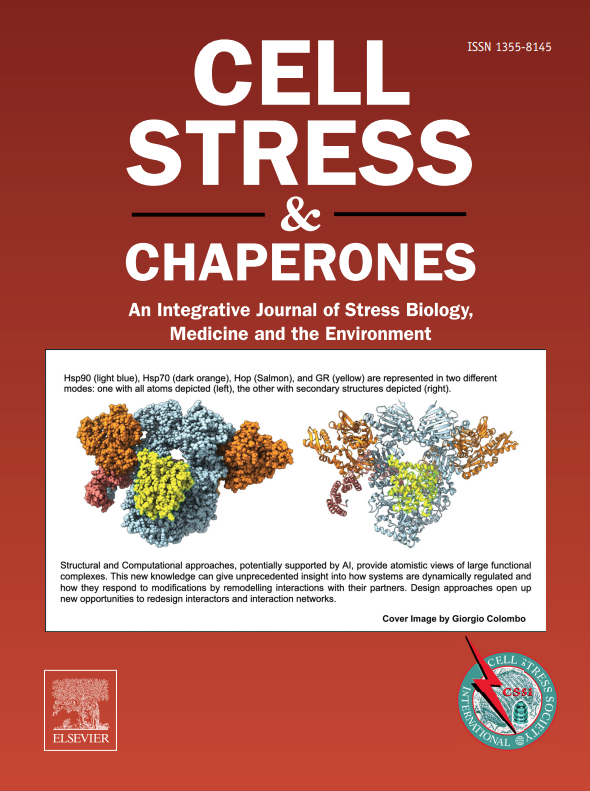温度升高会削弱美国牡蛎(Crassostrea virginica)的卵巢功能并诱导细胞凋亡和氧化应激:潜在机制和信号通路。
IF 3.3
3区 生物学
Q3 CELL BIOLOGY
引用次数: 0
摘要
据预测,全球气候变化将加剧海洋和沿海生物的热应力,影响其发育、生长和繁殖功能。在这项研究中,我们对卵巢的发育进行了组织学观察,对卵巢热休克蛋白-70(HSP70)、硝基酪氨酸蛋白(NTP,活性氮物种(RNS)的指标)和二硝基苯蛋白(DNP,蛋白质氧化的指标)的表达进行了免疫组化分析、原位 TUNEL 法检测细胞凋亡、卵巢 Caspase-3/7 活性的生化分析、蛋白羰基(PC,活性氧(ROS)的测量指标)含量、硝酸盐/亚硝酸盐(NOx)水平以及美国牡蛎(Crassostrea virginica)体外液(EPF,一种重要的体液)的 pH 值。在受控的实验室条件下,将牡蛎暴露在中温(28 °C)和高温(32 °C)下一周。与对照组(24 °C)相比,暴露在较高温度下的牡蛎卵的数量和直径以及EPF蛋白浓度都明显下降。相比之下,暴露于高温后,EPF pH值、卵巢HSP70 mRNA水平和蛋白表达量都有所增加,这与卵巢凋亡增加一致。卵巢凋亡的增强与受热牡蛎的卵巢Caspase-3/7活性、PC含量、NOx水平以及NTP和DNP表达的增加有关。总之,这些结果表明,较高的温度会大幅提高 RNS 和 ROS 水平,增加凋亡的发生率,进而降低牡蛎的卵巢功能。本文章由计算机程序翻译,如有差异,请以英文原文为准。
Elevated temperature attenuates ovarian functions and induces apoptosis and oxidative stress in the American oyster, Crassostrea virginica: potential mechanisms and signaling pathways
Global climate change is predicted to intensify thermal stress in marine and coastal organisms, affecting their development, growth, and reproductive functions. In this study, we performed histological observations on ovarian development, immunohistochemical analyses of ovarian heat shock protein-70 (HSP70), nitrotyrosine protein (NTP, an indicator of reactive nitrogen species (RNS)), and dinitrophenyl protein (DNP, an indicator of protein oxidation) expressions, in situ TUNEL assay for cellular apoptosis, biochemical analyses of ovarian caspase-3/7 activity and protein carbonyl (PC, a measure of reactive oxygen species (ROS)) contents, nitrate/nitrite (NOx) levels, and extrapallial fluid (EPF, an important body fluid) pH in the American oyster, Crassostrea virginica. Oysters were exposed to medium (28 °C) and high (32 °C) temperatures under controlled laboratory conditions for 1 week. Oysters exposed to higher temperatures significantly decreased the number and diameter of eggs, and EPF protein concentrations compared with controls (24 °C). In contrast, EPF pH, ovarian HSP70 mRNA levels, and protein expression were increased after heat exposure, consistent with increased ovarian apoptosis. The enhanced apoptosis in ovaries was associated with increased ovarian caspase-3/7 activity, PC contents, NOx levels, and NTP and DNP expressions in heat-exposed oysters. Collectively, these results suggest that higher temperatures drastically increase RNS and ROS levels, increasing incidence of apoptosis and subsequently reducing ovarian functions in oysters.
求助全文
通过发布文献求助,成功后即可免费获取论文全文。
去求助
来源期刊

Cell Stress & Chaperones
生物-细胞生物学
CiteScore
7.60
自引率
2.60%
发文量
59
审稿时长
6-12 weeks
期刊介绍:
Cell Stress and Chaperones is an integrative journal that bridges the gap between laboratory model systems and natural populations. The journal captures the eclectic spirit of the cellular stress response field in a single, concentrated source of current information. Major emphasis is placed on the effects of climate change on individual species in the natural environment and their capacity to adapt. This emphasis expands our focus on stress biology and medicine by linking climate change effects to research on cellular stress responses of animals, micro-organisms and plants.
 求助内容:
求助内容: 应助结果提醒方式:
应助结果提醒方式:


